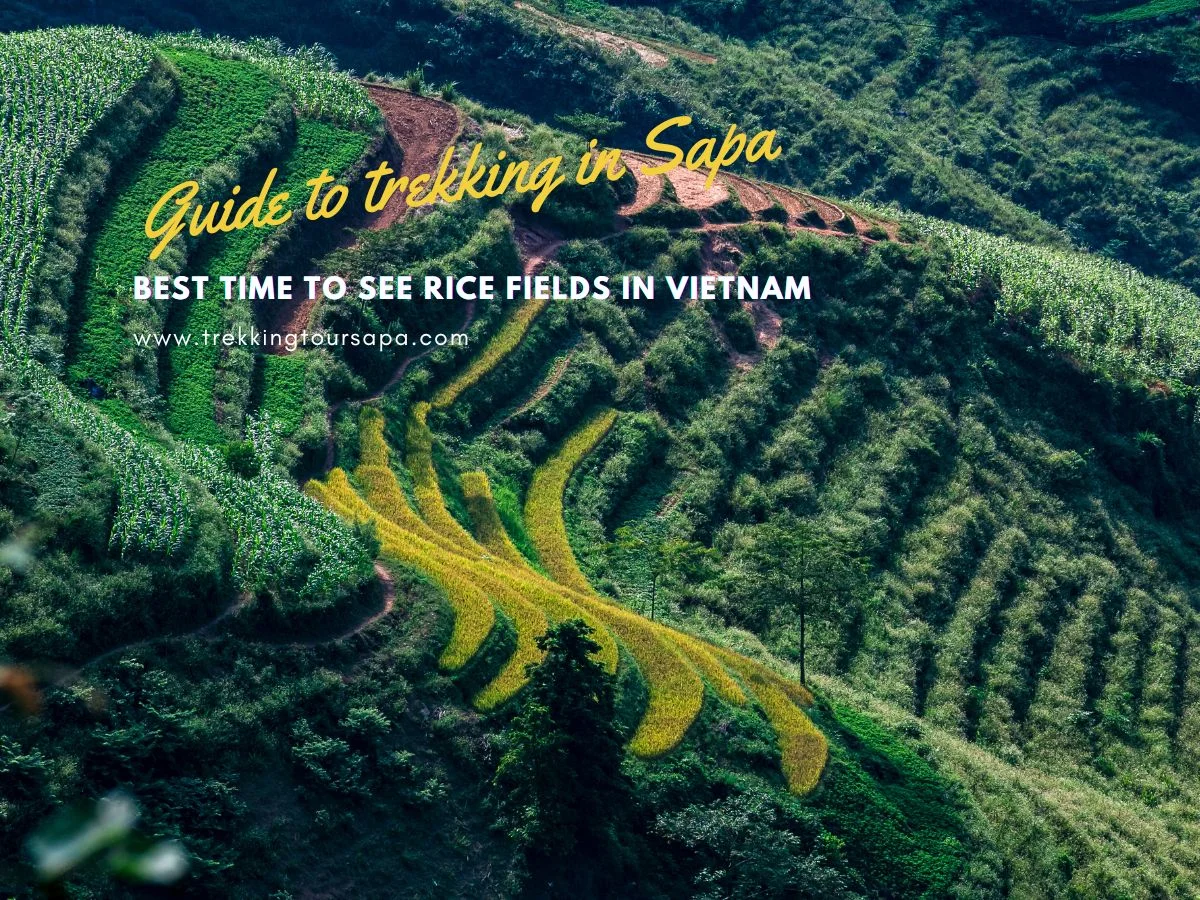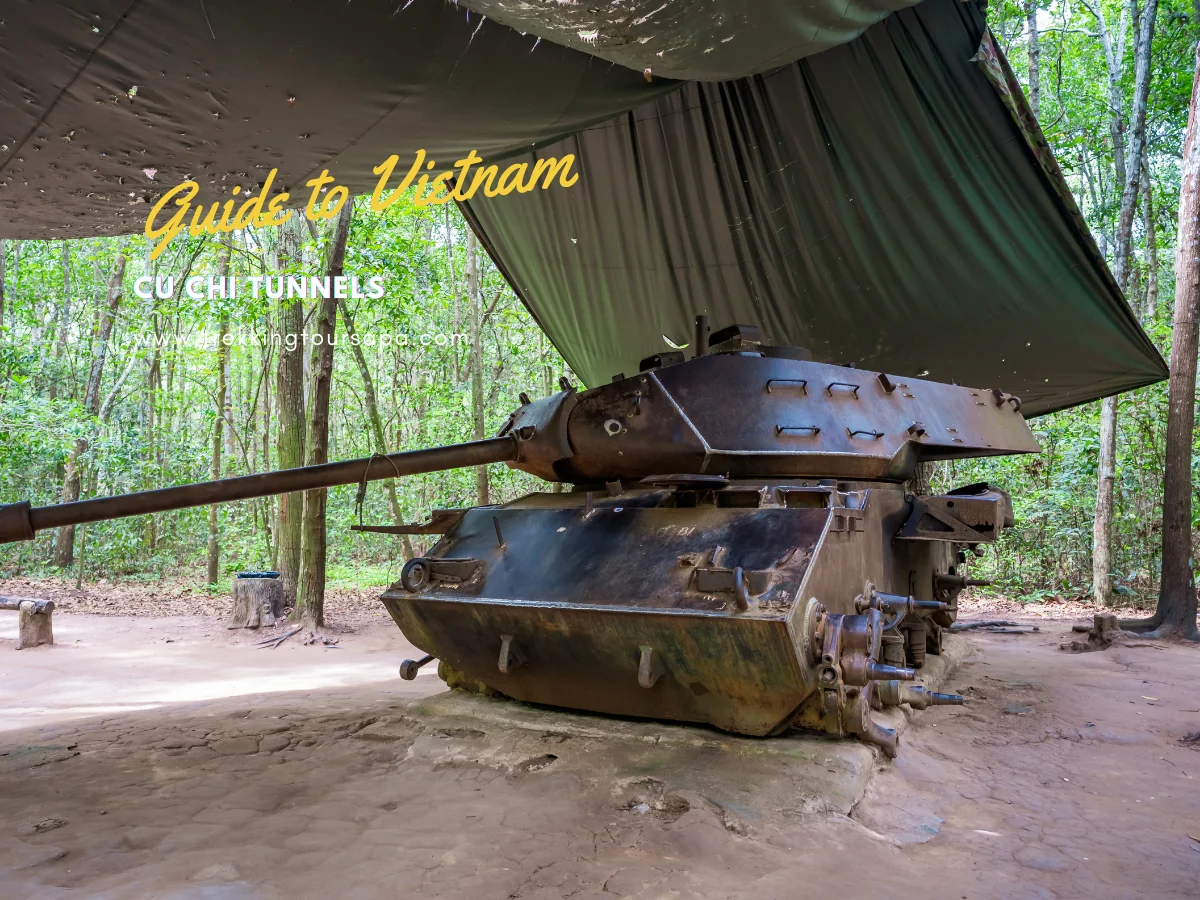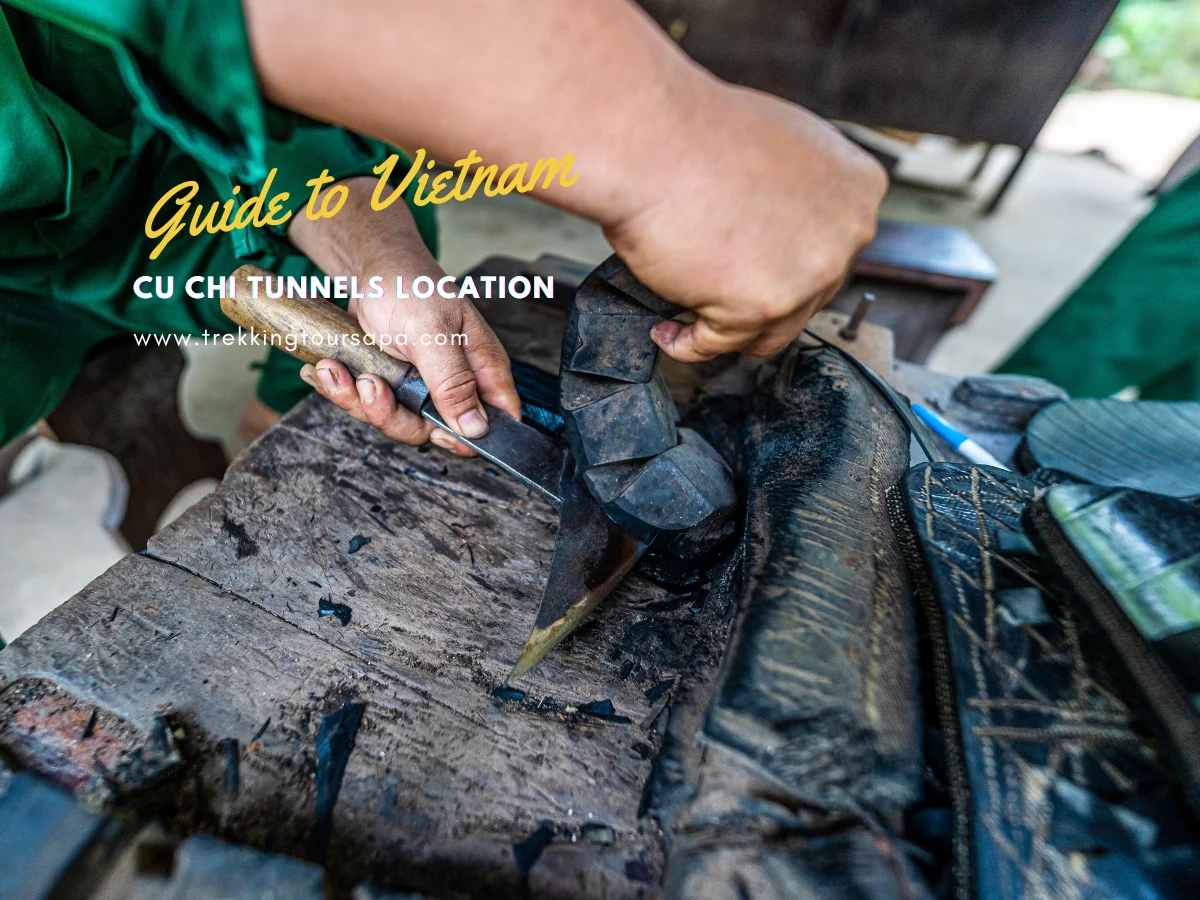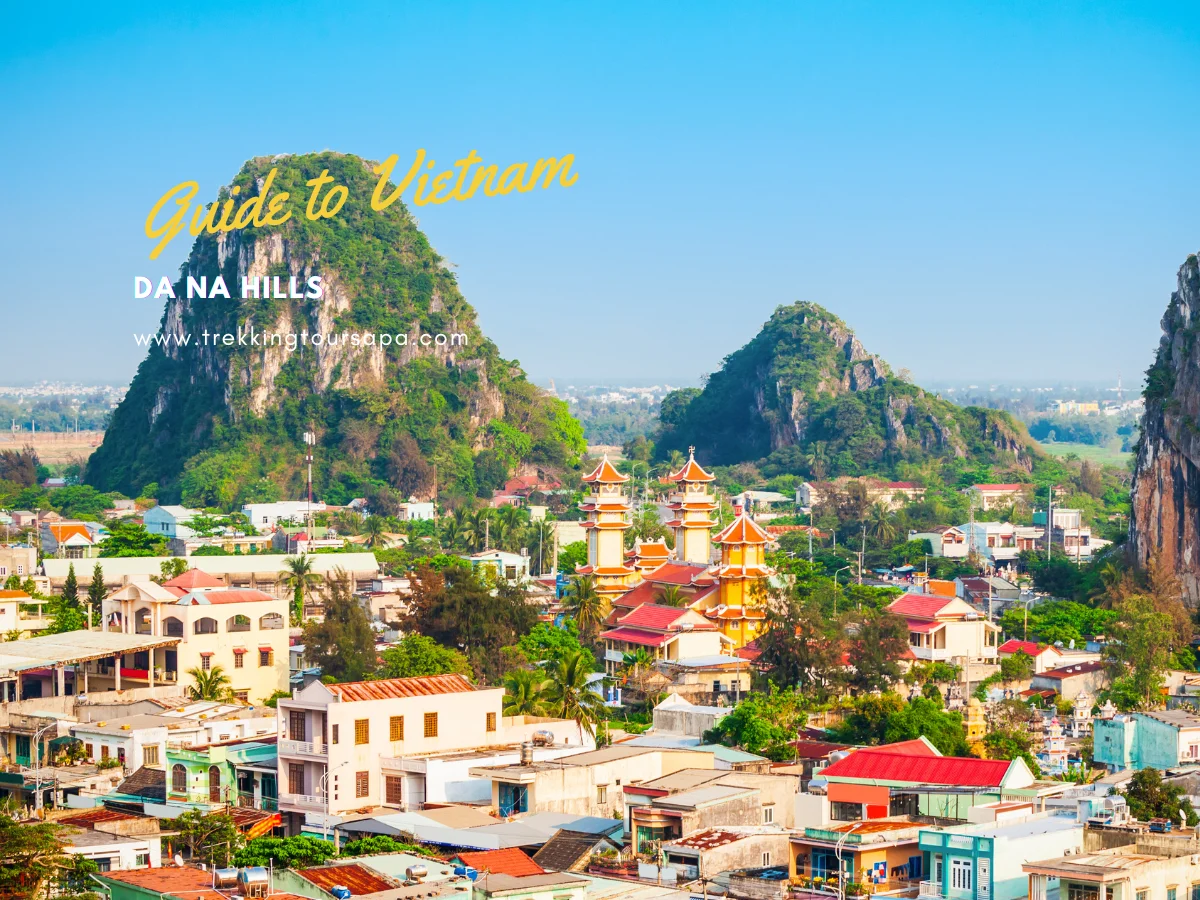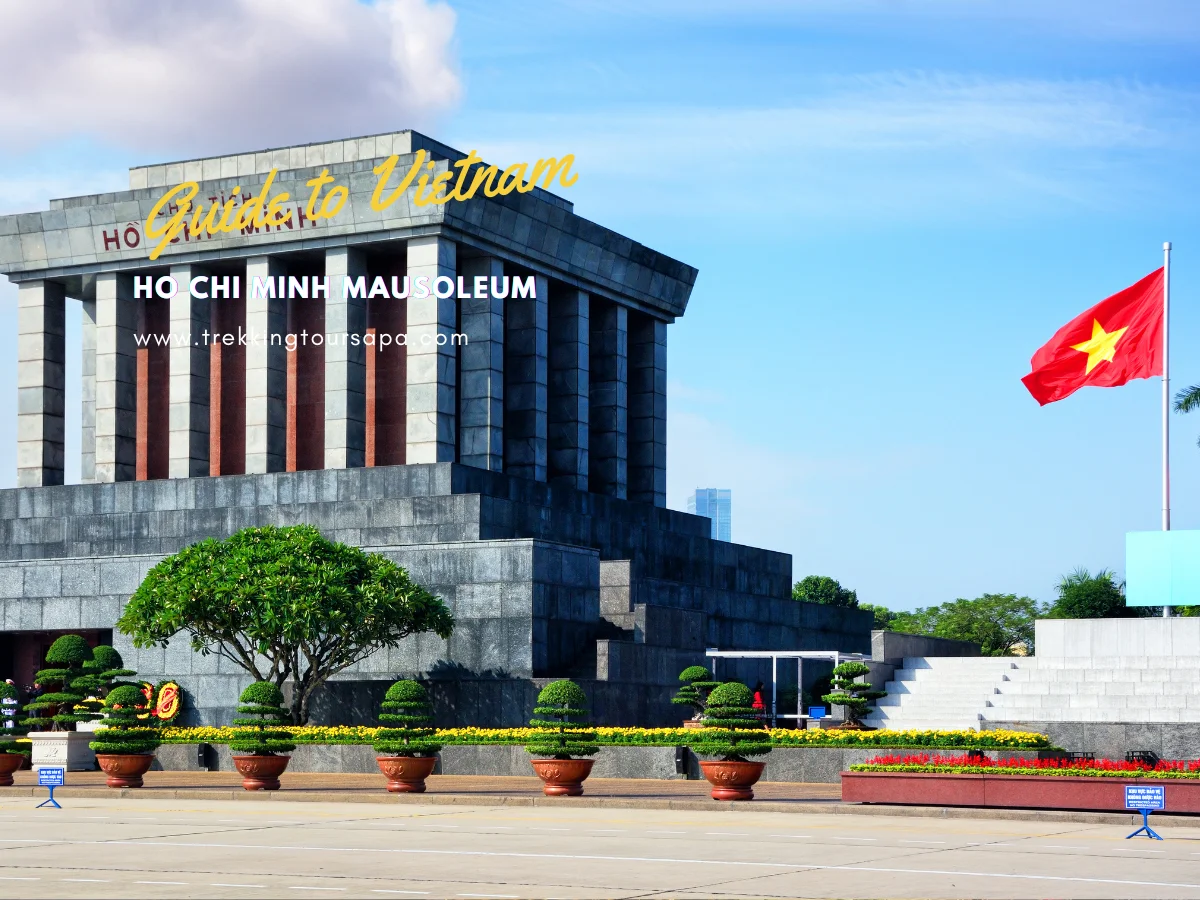1. Breathtaking Scenery of Sapa: Sapa boasts mesmerizing landscapes of terraced rice fields, lush valleys, and towering mountains, creating a postcard-worthy backdrop for trekking.
2. Ethnic Minority Cultures in Sapa: Sapa is home to several ethnic minority groups, including the Hmong, Red Dao, Tay, and Giay, each with their distinct traditions, customs, and colorful attire.
3. Challenging Terrain for Trekking Enthusiasts: Trekking in Sapa offers a thrilling experience with rugged and challenging terrains, making it ideal for adventure seekers and outdoor enthusiasts.
4. Unique Homestay Experience in Sapa: Visitors have the opportunity to stay with local families in traditional homestays, immersing themselves in the daily lives and cultural traditions of the ethnic communities.
5. Local Cuisine to Treat Your Taste Buds: Sapa’s cuisine is a delightful blend of local flavors and ingredients, offering a culinary adventure for food lovers. Don’t miss trying local specialties like thang co (a traditional soup) and grilled meats.
6. Sapa’s Hidden Waterfalls and Caves: Apart from its beautiful landscapes, Sapa is also dotted with hidden waterfalls and caves, offering opportunities for exploration and adventure.
7. The Beauty of Sapa in Different Seasons: Sapa showcases its unique charm in each season, with vibrant greenery in spring, golden terraces in autumn, and even snow-capped mountains in winter.
8. Sapa’s Colorful Local Markets: Sapa’s bustling markets, such as Bac Ha Market and Can Cau Market, are vibrant and colorful, showcasing local handicrafts, traditional clothing, and fresh produce.
9. Sapa’s Rich History and Cultural Heritage: Sapa has a rich history with remnants of French colonial architecture and historical sites that highlight its cultural heritage, such as the Stone Church and Ham Rong Mountain.
10. Responsible Trekking and Sustainable Tourism in Sapa: Efforts have been made to promote responsible trekking and sustainable tourism in Sapa through community-based tourism initiatives, ensuring the preservation of the environment and the well-being of the local communities.
With its astounding beauty, vibrant cultures, and exhilarating trekking opportunities, Sapa is a destination that should be on every traveler’s radar. Whether you’re seeking adventure, cultural immersion, or simply a chance to connect with nature, trekking in Sapa offers a truly unforgettable experience.
Table of Contents
ToggleKey takeaway:
- Trekking in Sapa offers breathtaking scenery: Explore the stunning landscapes of Sapa while trekking, surrounded by mountains, rice terraces, and lush greenery.
- Sapa showcases ethnic minority cultures: Immerse yourself in the rich cultural diversity of Sapa, encountering various ethnic minority groups and experiencing their traditions and way of life.
- Sapa is a haven for adventure seekers: With challenging terrains, Sapa offers a thrilling experience for trekking enthusiasts, allowing them to test their skills and endurance.
Why is Trekking in Sapa Popular?
Trekking in Sapa is popular for several reasons. First, Sapa offers breathtaking scenery with stunning landscapes, rice terraces, and majestic mountains. This is one of the main reasons why trekking in Sapa is so popular. The beauty of the surroundings mesmerizes trekkers and provides a unique experience. Sapa is home to ethnic minority groups like the Hmong, Dao, and Tay. This cultural diversity adds to the popularity of trekking in Sapa, as visitors have the opportunity to immerse themselves in these cultures, learn about their customs and crafts, and interact with the local communities.
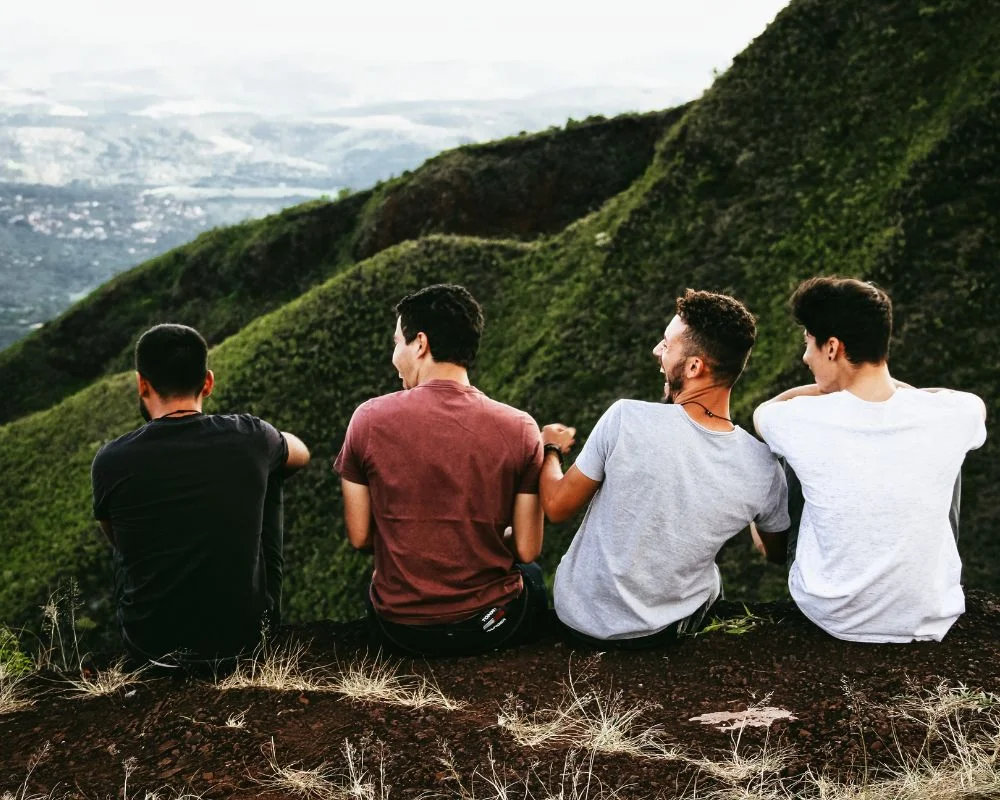
The challenging terrain in Sapa is another reason why trekking is popular. The undulating hills and rugged trails provide a thrilling adventure for trekking enthusiasts. The physical exertion required for trekking in Sapa adds to the sense of achievement and excitement. The challenging nature of the trails attracts those seeking an adrenaline rush and a sense of accomplishment.
Sapa also offers a unique homestay experience, allowing visitors to stay with local families and experience their way of life firsthand. This cultural immersion enhances the overall trekking experience and creates lasting memories. Staying with local families allows trekkers to get a deeper understanding of the local culture and traditions, making the experience even more enriching and authentic.
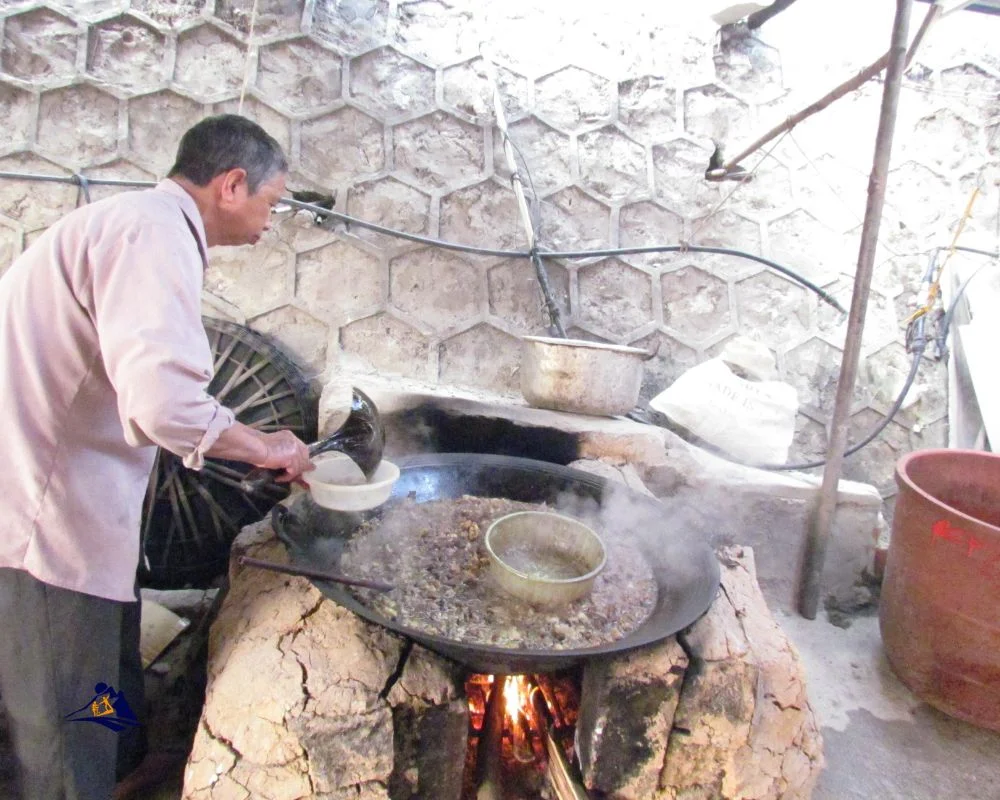
Sapa’s local cuisine is a treat for the taste buds. Visitors can sample traditional dishes like “thang co” (a soup made from horse meat) or “bamboo-tube rice” cooked over an open fire. These culinary delights offer a glimpse into the local food culture and contribute to the popularity of trekking in Sapa. Trying these unique dishes adds an extra dimension to the overall experience, making it even more memorable and enjoyable.
Breathtaking Scenery of Sapa
The breathtaking scenery of Sapa attracts nature lovers. Sapa offers stunning views with its towering mountains, terraced rice fields, and lush valleys. The majestic Fansipan, the highest peak in Indochina, adds to the beauty. As you trek through the landscapes, you will be amazed by the panoramic views and natural beauty surrounding you.
The terraced rice fields of Sapa are both functional and visually stunning. During the harvest season, the fields turn golden, creating a beautiful effect. These meticulously carved terraces follow the contours of the land. As you walk along the trails, you will witness the hard work and skill involved in cultivating these landscapes.

Sapa’s lush green valleys and forests are another highlight. Waterfalls, rivers, and streams add to the area’s natural charm. The air is fresh and crisp, creating a serene and peaceful atmosphere.
For the best visibility and to fully appreciate Sapa’s breathtaking scenery, it is recommended to visit during the dry season from September to November. This will ensure pleasant weather and clear skies.
Whether you’re a nature enthusiast or seeking a peaceful escape, Sapa’s breathtaking scenery will leave you in awe. Prepare to be mesmerized by the stunning mountains, terraced rice fields, and verdant valleys as you embark on your trekking adventure in this picturesque destination.
Ethnic Minority Cultures in Sapa
Sapa is home to vibrant ethnic minority cultures. The Hmong, Dao, Tay, and Giay are some of the ethnic groups in Sapa.
1. The Hmong people are the largest ethnic group in Sapa. They are known for their embroidered clothing and strong community.
2. The Dao people reside in the higher mountainous regions of Sapa. They have distinctive red headdresses and a rich cultural heritage, including traditional medicinal practices.
3. The Tay people live in stilt houses scattered throughout Sapa’s valleys. They are known for their hospitality and production of traditional handicrafts.
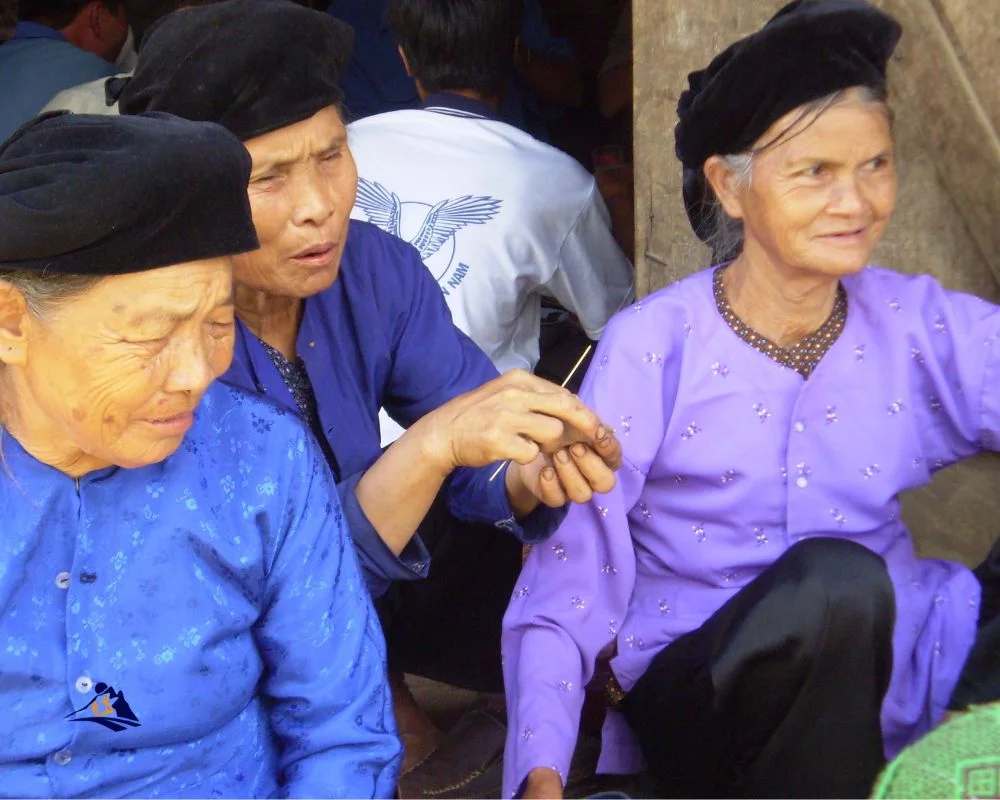
4. The Giay people cultivate rice terraces, a significant part of Sapa’s landscape. They have a close connection to nature and use sustainable farming practices.
5. These ethnic minority cultures in Sapa have their own languages, belief systems, and traditional festivals. Festivals provide an opportunity to experience their music, dances, and costumes.
6. Taking part in a homestay immerses you in the daily life of these ethnic communities. You can learn customs, participate in local activities, and taste traditional dishes.
7. Respect the cultural practices and social norms of these communities when visiting Sapa. Being mindful of traditions and customs ensures a positive cultural exchange.
8. Sapa offers opportunities to support local communities, like purchasing handicrafts from artisans or booking guided tours with local guides who provide insights into ethnic minority cultures.
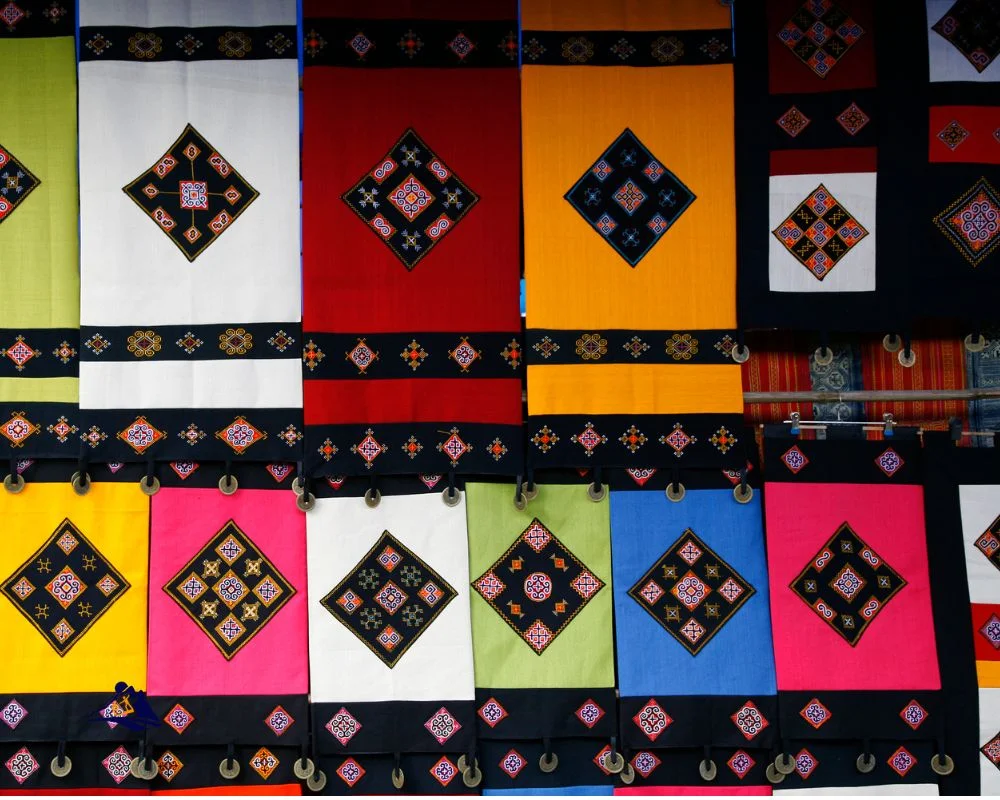
9. Engaging with ethnic minority cultures in Sapa contributes to the preservation of their traditions and way of life, sustaining their cultural heritage for future generations.
10. Exploring the ethnic minority cultures in Sapa offers a unique perspective on Vietnam’s diverse cultural landscape. It allows you to appreciate the richness and beauty of these communities while promoting cultural understanding and appreciation.
Which Ethnic Minority Groups Can Be Found in Sapa?
The ethnic minority groups that can be found in Sapa are the Hmong, Dao, Tay, Giay, Xa Pho, Red Dao, Phu La, and Ha Nhi people.
Challenging Terrain for Trekking Enthusiasts
The challenging terrain in Sapa provides an exhilarating experience for trekking enthusiasts. The steep slopes and rugged trails offer a thrilling adventure. The terrain is filled with rocky paths, dense forests, and unpredictable weather conditions, making preparation and equipment essential for trekking. With elevations ranging from 1,000 to 3,000 meters, trekkers can expect breathtaking views of terraced rice fields, cascading waterfalls, and stunning mountain peaks.
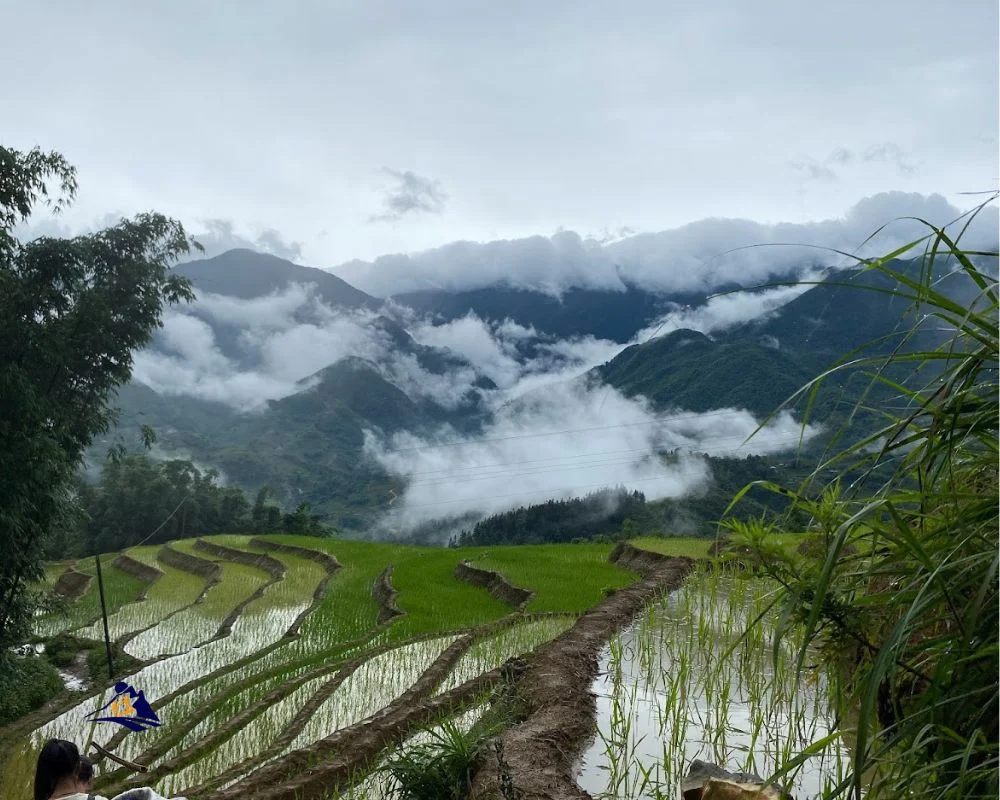
The diverse landscape adds to the excitement, as each day brings different obstacles and natural beauty, making it a dream destination for those seeking a challenging terrain for trekking enthusiasts.
Sapa was home to ethnic minority groups, including the Hmong, Dao, and Tay people. These communities have lived in the mountains of Sapa for centuries, cultivating their unique traditions and way of life in this challenging terrain. The history of Sapa is embedded in the land, making it a perfect destination to explore for trekking enthusiasts.
Trekking in Sapa allows visitors to not only witness the stunning landscapes but also to immerse themselves in the rich cultural heritage of these ethnic groups. Interactions with the local communities provide a deeper understanding of the region’s history and a chance to appreciate the resilience and adaptability of its people, making it an ideal choice for those seeking adventure and a chance to learn and connect with the local culture.
Unique Homestay Experience in Sapa
A unique homestay experience in Sapa allows you to engage with the local culture and community. Live like a local: Stay in a homestay to experience the daily life of people in Sapa. Learn their traditions and customs firsthand.
Authentic accommodations: Homestays in Sapa are traditional houses or cottages owned by locals. They provide comfort while showcasing local architecture and style.
Home-cooked meals: Enjoy delicious meals prepared by your hosts. Savor traditional Vietnamese dishes made with fresh, locally sourced ingredients.
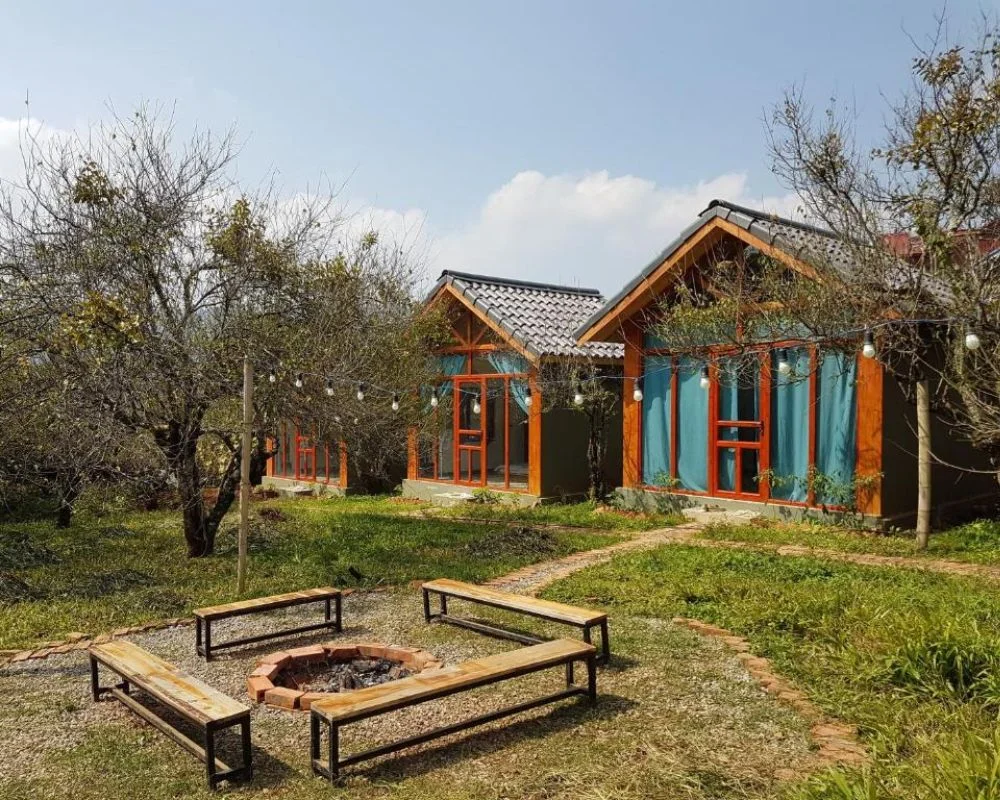
Cultural exchange: Interact with your hosts and fellow guests to learn about the local culture. Participate in activities and traditional festivals or celebrations.
Breathtaking landscapes: Homestays in Sapa are located in scenic areas surrounded by terraced rice fields, mountains, and valleys.
For a unique homestay experience in Sapa, choose local families with positive reviews for hospitality and cultural engagement. Immerse yourself in the culture through cooking classes, farming, or crafts.
Pack comfortable walking shoes to explore the beautiful landscapes. Disconnect from technology and connect with the community, nature, and yourself.
What to Expect in a Homestay in Sapa?
– Authentic cultural immersion: When you choose a homestay in Sapa, you can expect to have a genuine cultural immersion experience. You will have the opportunity to interact with locals, learn about their customs, and participate in their daily activities.
– Cosy accommodation: Sapa homestays offer comfortable rooms with traditional bedding and furnishings, ensuring a warm and cozy atmosphere for your stay.
– Homemade meals: One of the highlights of a Sapa homestay is the chance to enjoy authentic home-cooked meals. You can indulge in traditional dishes prepared with fresh, local ingredients to truly appreciate the flavors of the local cuisine.
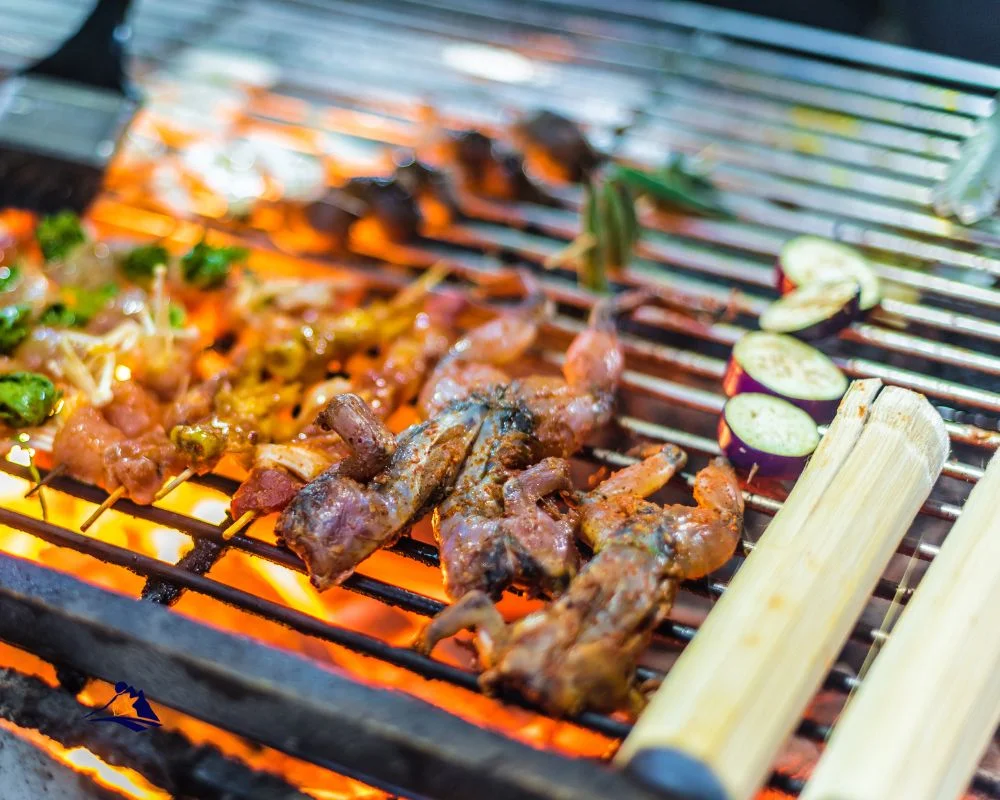
– Local guidance and insights: Your homestay hosts will be well-informed about the area and can provide valuable guidance and information on trekking routes, local attractions, and cultural practices.
– Trekking and exploration opportunities: Many homestays in Sapa are situated in picturesque villages surrounded by breathtaking landscapes. This gives you easy access to trekking trails where you can explore and admire the natural beauty of Sapa.
– Warm hospitality: The homestay hosts are known for their warm and welcoming nature, treating you like a member of their family. This ensures that your experience is not only memorable but also heartwarming.
Local Cuisine to Treat Your Taste Buds
When in Sapa, make sure to indulge in the local cuisine to treat your taste buds. Take the opportunity to try these delicious dishes that are on offer:
– Pho: A traditional Vietnamese noodle soup that boasts a flavorful broth, rice noodles, as well as your choice of meat or vegetables.
– Banh Mi: A mouthwatering Vietnamese sandwich that is packed with grilled meat, pate, pickled vegetables, and fresh herbs.
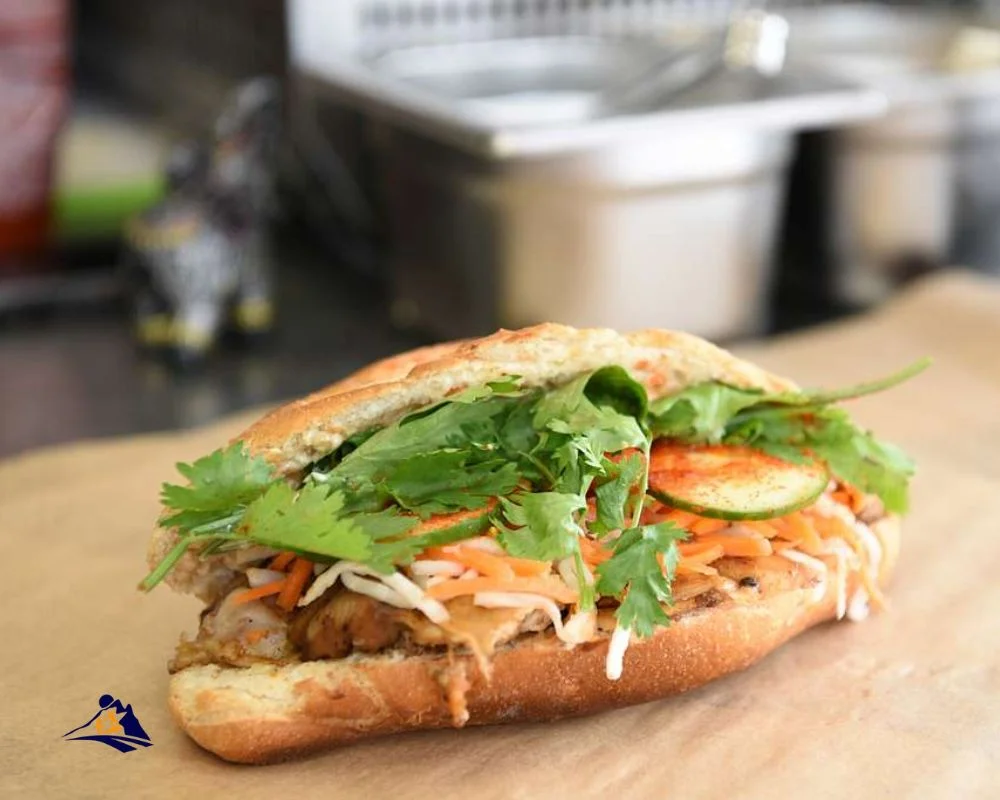
– Bun Cha: A delectable dish that consists of grilled pork alongside vermicelli noodles, fresh herbs, and a tangy dipping sauce.
– Goi Cuon: Savor the taste of fresh spring rolls that are filled with shrimp, pork, or even vegetables. They are usually served with a delicious dipping sauce on the side.
– Xoi: Enjoy a savory sticky rice dish that comes with various toppings such as fried onions, chicken, or pork. It’s the perfect choice for breakfast or a quick snack.
For an authentic culinary experience, be sure to visit the local street vendors and small family-run restaurants. They are known to offer the best flavors and provide a chance for you to immerse yourself in the local food culture.
Sapa 1 Day Tours
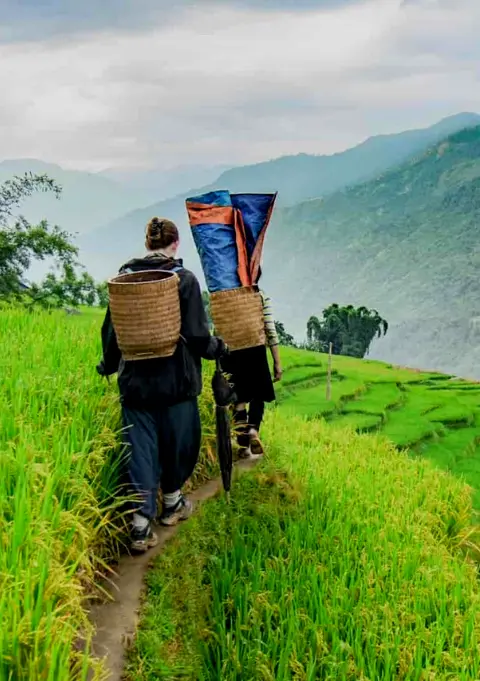
- 1 day experience
- Moderate to challenging
- Cultural immersion & active adventure
- Rice fields, valleys & villages
- Private tours
- Vegan-friendly
Sapa 2 Day Tours
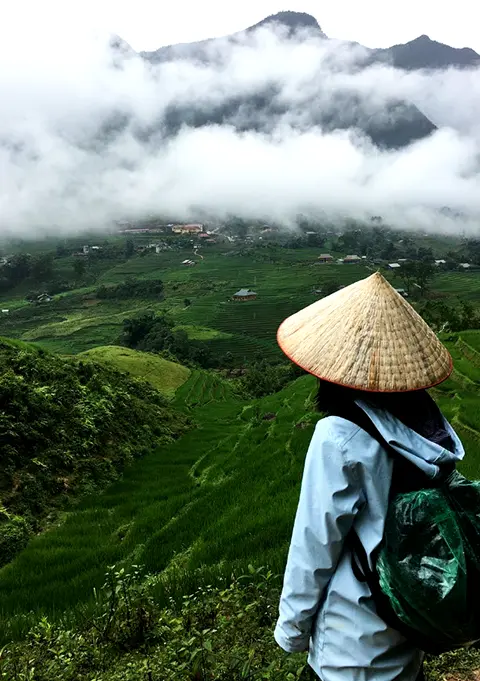
- 2 days 1 night experience
- Moderate to challenging
- Cultural immersion & active adventure
- Mountains, valleys, rice fields and villages
- Private tours
- Vegan-friendly
Sapa 3 Day Tours
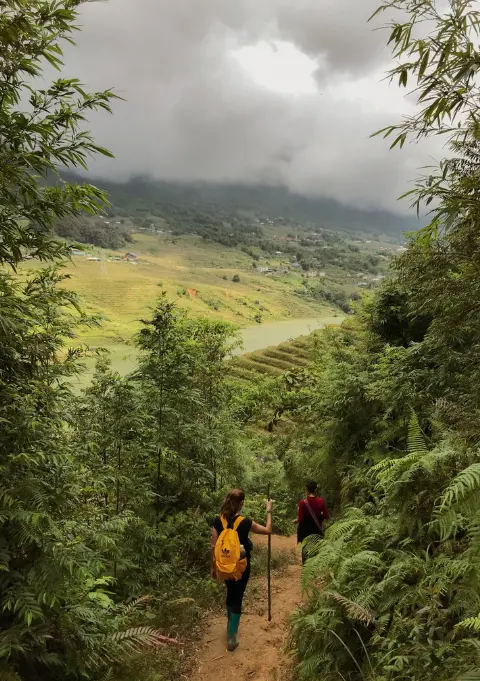
- 3 days 2 night experience
- Moderate to challenging
- Cultural immersion & active adventure
- Mountains, valley, rice fields & villages
- Private tours
- Vegan-friendly
Sapa 4 Day Tours
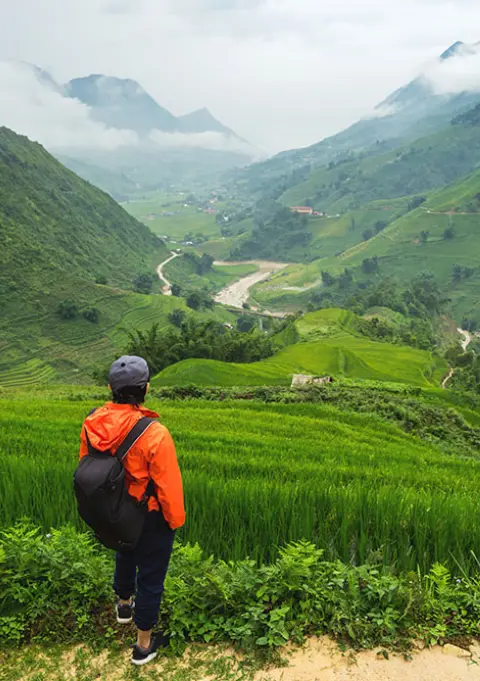
- 4 days 3 night experience
- Moderate to challenging
- Cultural immersion & active adventure
- Mountains, valleys, rice fields & villages
- Private tours – Less Touristic
- Vegan-friendly
Do not miss out on the opportunity to savor the local cuisine in Sapa. Your taste buds will definitely thank you!
What Traditional Dishes Can You Try in Sapa?
In Sapa, you can experience the culinary delights of the region by indulging in a variety of traditional dishes. Have you ever tried Pho, a beloved Vietnamese noodle soup known for its flavorful broth, accompanied by rice noodles and a multitude of delectable toppings? If not, Sapa is the perfect place to savor this delightful dish.
Another dish to tantalize your taste buds is banana flower salad. This refreshing salad consists of thinly sliced banana flower, aromatic herbs, crunchy peanuts, all dressed with a tangy and zesty dressing. The combination of textures and flavors will surely leave a lasting impression on your palate.
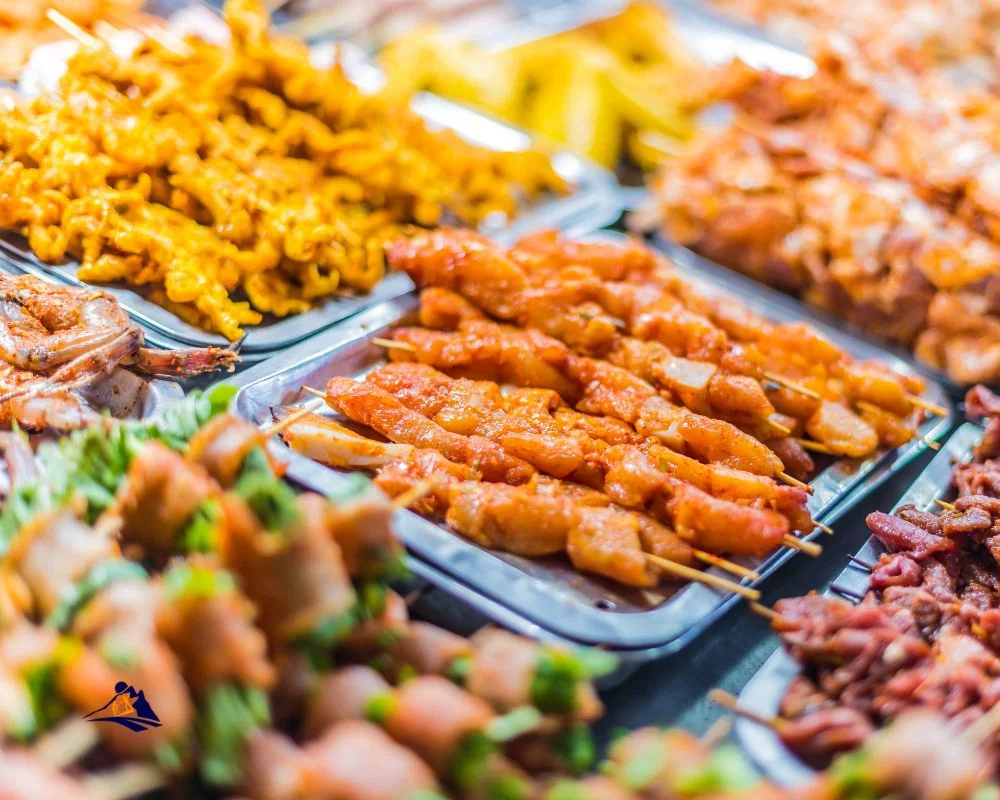
For a carnivorous treat, you must not miss out on the grilled pork skewers. These skewers are marinated in a delectable blend of spices that infuse the meat with tenderness and mouthwatering flavor. Grilled to perfection, these skewers are a true delight for meat lovers.
To experience a unique dining experience, indulge in sticky rice cooked in bamboo tubes. This cooking method imparts a distinct aroma and texture to the rice, making it an unforgettable accompaniment to any meal.
Another culinary gem in Sapa is the famous spring rolls. These delectable treats consist of rice paper wraps filled with fresh vegetables, fragrant herbs, and your choice of protein. They are then served alongside a flavorful dipping sauce, creating a harmonious blend of flavors.
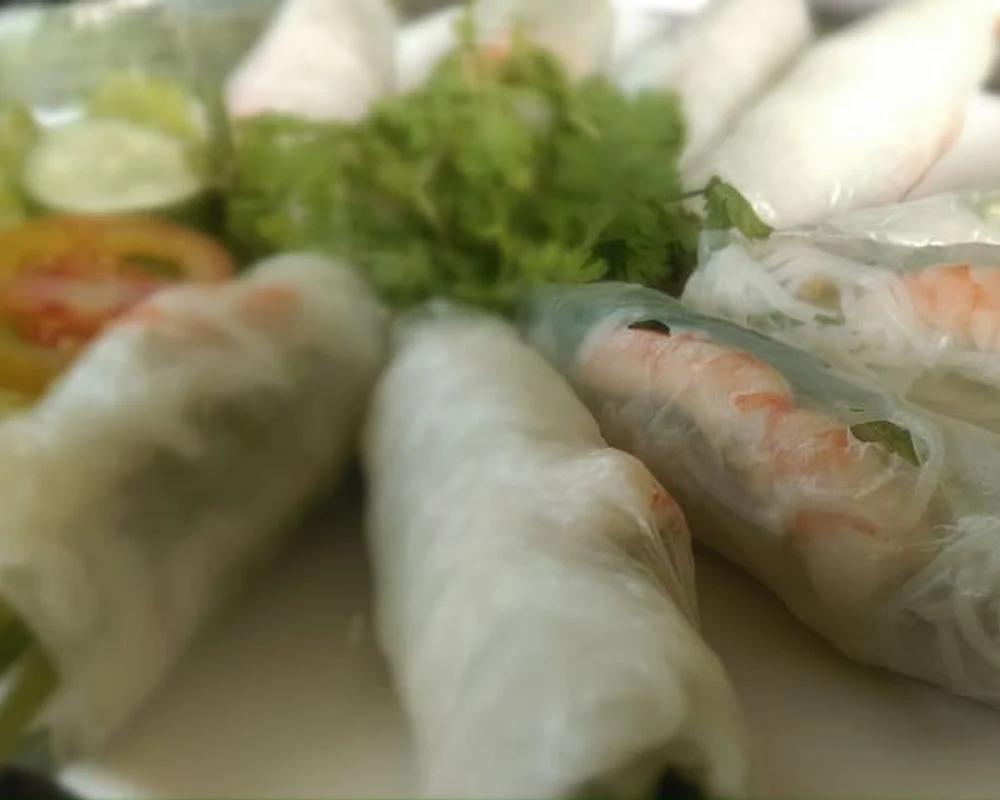
If you are feeling a bit more adventurous, it is a must to try the specialty dish of Sapa – “thang co.” This hearty stew showcases cuts of meat such as buffalo, horse, and pork, along with offal and a blend of traditional herbs and spices. The rich and complex flavors of this dish will transport you to the heart of local culture and allow you to savor the authentic taste of Sapa.
Make sure not to miss the chance to explore the diverse range of flavors that Sapa has to offer. What better way to do so than by indulging in these traditional dishes that are sure to leave a lasting impression on your culinary journey?
Sapa’s Hidden Waterfalls and Caves
Sapa’s Hidden Waterfalls and Caves in northern Vietnam are a must-see for adventure enthusiasts. Sapa has numerous hidden waterfalls that offer a serene setting. The Silver Waterfall, cascading down from a height of 200 meters, is breathtaking. Another popular option is the Love Waterfall, known for its romantic aura. These waterfalls provide a refreshing escape from city life.
Sapa is also known for its fascinating caves. The Muong Hoa Cave, located near the Muong Hoa Valley, offers a unique experience with its intriguing rock formations and ancient stalagmites.
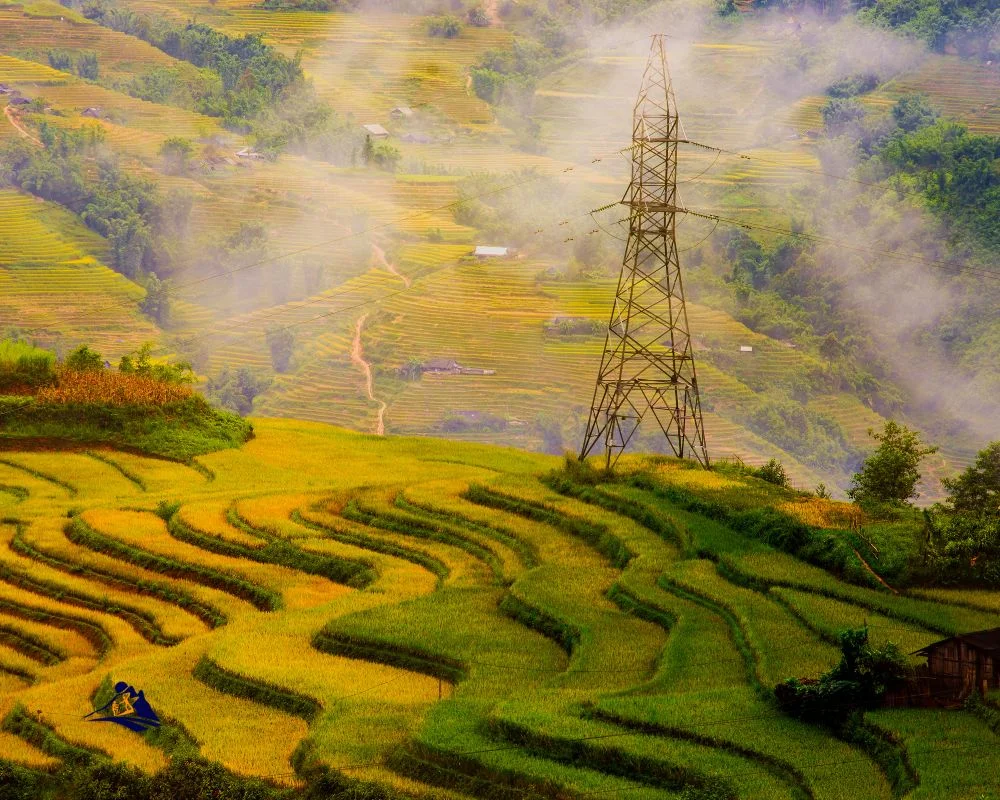
Sapa’s hidden waterfalls and caves provide opportunities for trekking and hiking, allowing you to immerse yourself in the beauty of nature. Exploring Sapa’s hidden waterfalls and caves also offers a chance to delve into the local culture. The ethnic minority tribes residing in the area have their own legends and stories associated with these natural wonders, providing insights into their traditions and beliefs.
When visiting these hidden sites, it is important to respect the environment and local communities. Avoid littering and follow guidelines set by local authorities. Supporting local businesses and tour operators helps ensure sustainable tourism practices.
Visiting Sapa’s hidden waterfalls and caves offers an unforgettable experience where you can marvel at nature’s wonders and immerse yourself in the local culture. Lace up your hiking boots and embark on an adventure to explore these hidden gems in Sapa.
Which Waterfalls and Caves Can You Explore in Sapa?
These are the waterfalls and caves that you can explore in Sapa:
1. The Silver Waterfall, also known as Thac Bac Waterfall, is located 12 kilometers from Sapa town. It cascades down from a height of over 200 meters and offers a breathtaking view. It has become a popular spot for photography, attracting tourists from all over the world.
2. The Love Waterfall in Sapa is a romantic and picturesque waterfall. It is surrounded by lush greenery, creating a serene and tranquil atmosphere. This waterfall is a must-visit for those seeking a romantic getaway or a peaceful retreat.

3. Thuy Cung Cave is situated near Love Waterfall. This cave provides a unique and adventurous experience for visitors. You can explore its natural formations and enjoy the cool, damp atmosphere. It is a hidden gem waiting to be discovered.
4. Tram Ton Cave, located near Tram Ton Pass, is famous for its impressive stalactites and stalagmites. These natural formations create a mesmerizing underground world that will leave you in awe. It is a must-see for those interested in geological wonders.
These waterfalls and caves have played a significant role in the history of Sapa. They have provided natural beauty, served as a source of hydroelectricity, and offered shelter and hiding places during times of conflict for the local communities. Today, they continue to attract tourists from all over the world who come to explore the unique geological formations and immerse themselves in Sapa’s natural landscape. These waterfalls and caves are integral to Sapa’s cultural and natural heritage, preserving its rich history and captivating allure.
The Beauty of Sapa in Different Seasons
Sapa, in northern Vietnam, is renowned for its mesmerizing beauty throughout the year. This must-visit destination captivates the hearts of nature enthusiasts with its stunning landscapes in every season.
During the spring, Sapa blossoms with vibrant flowers and lush greenery. The terraced rice fields burst with a tapestry of colors, creating a picturesque setting that feels like stepping into a work of art.
Summer unveils a distinct allure in Sapa. The misty mornings give way to clear blue skies, unveiling breathtaking panoramic views of the surrounding mountains. Adventurers can easily explore the hidden gems of this region through accessible trekking routes.
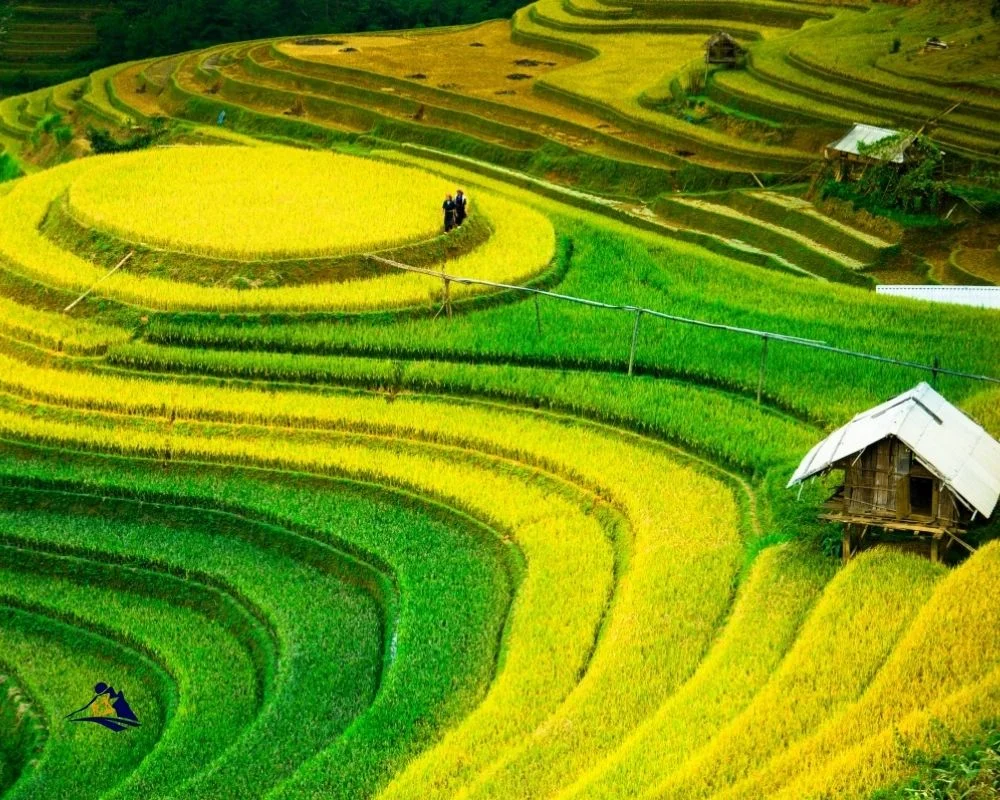
As autumn approaches, Sapa transforms into a captivating tapestry of golden hues. The rice fields transform into a sea of gentle yellow, resembling a masterpiece painting. The refreshing air and mild temperatures make it the perfect time to immerse oneself in the natural beauty of this enchanting place.
Winter casts a spell of enchantment over Sapa. The mountains are blanketed with a delicate layer of snow, creating a magical landscape straight out of a fairy tale. The misty mornings enhance the dreamlike atmosphere, while the sight of snow-capped peaks leaves onlookers mesmerized.
Fun Fact: Sapa proudly boasts Fan Si Pan, the highest peak in Vietnam, standing tall at 3,143 meters. Climbers from all corners of the globe are drawn to the challenge of conquering its slopes and savoring the awe-inspiring views from its majestic summit.
How Does Sapa Change Throughout the Year?
Sapa undergoes weather and scenery changes throughout the year. In spring, Sapa is covered in flowers and lush vegetation. The temperatures are mild, making it great for trekking and exploring.
During summer, Sapa experiences heavy rainfall, resulting in misty mountains and terraced rice fields. The temperatures are warmer, but evenings can still be cool. Visitors come to see the golden rice terraces.

In autumn, Sapa showcases vibrant shades of red, orange, and yellow as the leaves change colors. The weather becomes cooler and drier, providing clear blue skies and panoramic views. It is also the harvest season, allowing visitors to see locals working in the fields.
In winter, Sapa becomes a winter wonderland with frost-covered landscapes and occasional snowfall. The temperatures drop significantly, but it’s a unique time to experience the beauty and peacefulness without crowds.
Fun fact: Sapa is home to Fan Si Pan, standing at an impressive 3,143 meters, the highest peak in Indochina.
Sapa’s Colorful Local Markets
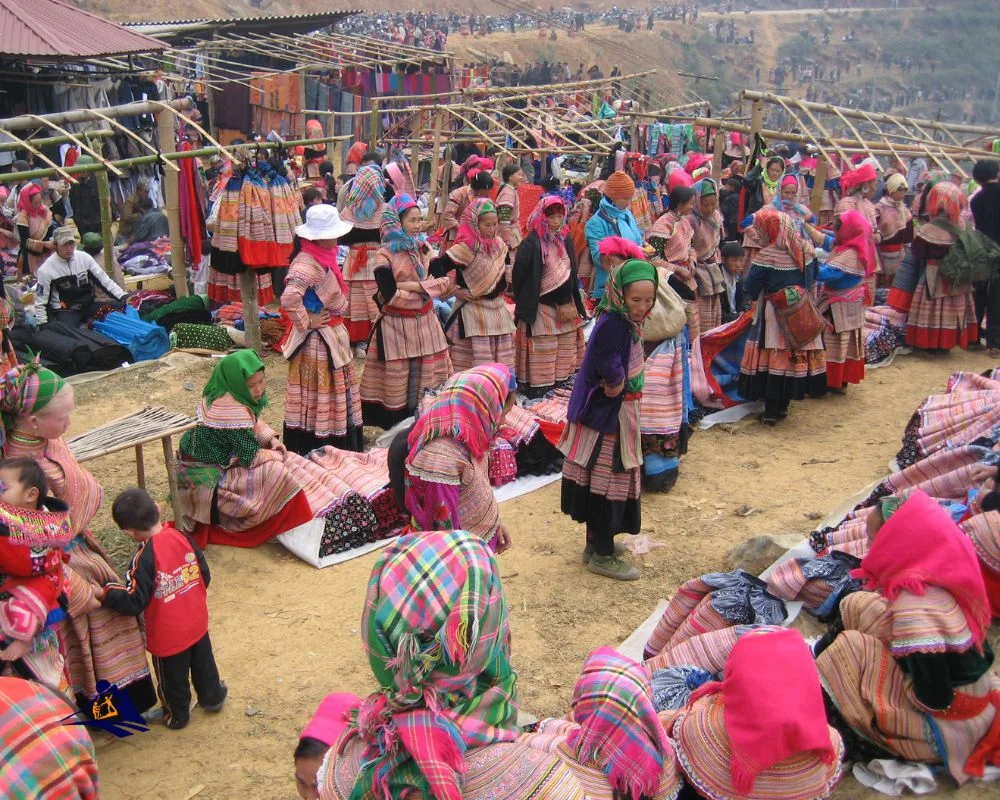
Sapa’s colorful local markets offer vibrant and immersive experiences for visitors. Here are some interesting facts about these markets:
- Sapa is home to several local markets, including Bac Ha Market, Can Cau Market, and Coc Ly Market.
- These markets are held on specific days of the week, such as Sundays for Bac Ha Market and Saturdays for Can Cau Market.
- Visiting Sapa’s colorful local markets allows you to witness the traditional lifestyles and cultures of the ethnic minority communities in Sapa, such as the Hmong, Dao, and Tay people.
- The markets are hubs of activity, with vendors selling a wide range of products including fresh produce, textiles, handicrafts, and livestock.
- You can find handcrafted items like embroidered clothing, traditional jewelry, and intricate textiles made by local artisans.
- Indulge in the delicious local cuisine available at Sapa’s colorful local markets, including traditional dishes like Thang Co (a sour or spicy horsemeat stew) and sticky rice cooked in bamboo tubes.
- Experience the lively atmosphere of the markets, with locals dressed in colorful traditional attire and engaging in animated conversations.
- Don’t forget to engage in the age-old practice of bargaining at Sapa’s colorful local markets, as it is a common part of the market culture.
Sapa 1 Day Tours

- 1 day experience
- Moderate to challenging
- Cultural immersion & active adventure
- Rice fields, valleys & villages
- Private tours
- Vegan-friendly
Sapa 2 Day Tours

- 2 days 1 night experience
- Moderate to challenging
- Cultural immersion & active adventure
- Mountains, valleys, rice fields and villages
- Private tours
- Vegan-friendly
Sapa 3 Day Tours

- 3 days 2 night experience
- Moderate to challenging
- Cultural immersion & active adventure
- Mountains, valley, rice fields & villages
- Private tours
- Vegan-friendly
Sapa 4 Day Tours

- 4 days 3 night experience
- Moderate to challenging
- Cultural immersion & active adventure
- Mountains, valleys, rice fields & villages
- Private tours – Less Touristic
- Vegan-friendly
When visiting Sapa’s colorful local markets, embrace the cultural diversity, try the local delicacies, and interact with the friendly locals. It’s an opportunity to immerse yourself in the rich tapestry of Sapa’s ethnic communities and create unforgettable memories.
Which Markets are Worth Visiting in Sapa?
– If you’re wondering which markets are worth visiting in Sapa, look no further. Let me introduce you to the top markets in the area.
– First up is the Bac Ha Market, located just 70 kilometers from Sapa. This market offers a vibrant shopping experience where you can find a variety of local products, crafts, clothing, and fresh produce.
– Another market worth exploring is the Can Cau Market, which takes place every Saturday. Not only does it provide stunning views of the surrounding mountains, but it also attracts different ethnic minority groups selling unique handicrafts and agricultural products.
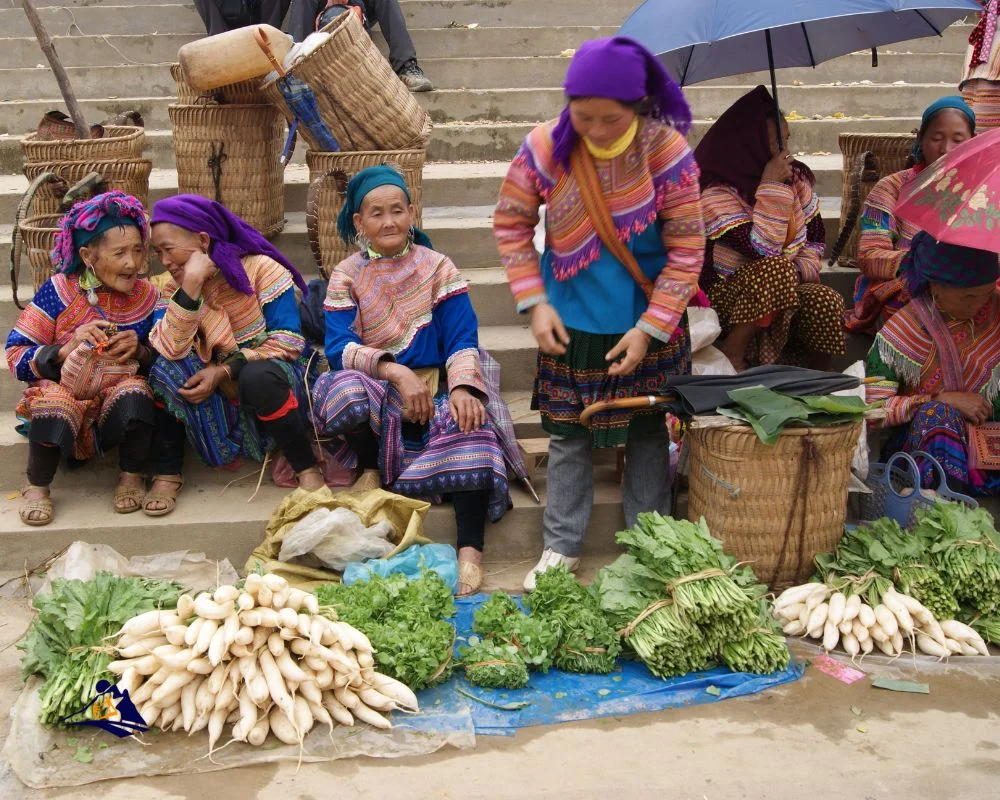
– On Sundays, you won’t want to miss the Muong Hum Market. Renowned for its colorful textiles and intricate embroidery, this market is perfect for finding one-of-a-kind souvenirs and gifts.
– For a tranquil and vibrant atmosphere, head to the Coc Ly Market. Situated along the Chay River, this market showcases handicrafts, herbal medicines, and fresh fruits. You can even enjoy a peaceful boat ride along the river.
– The Love Market of Sapa is a must-see. This unique cultural event brings together young people from different ethnic groups every Saturday evening in search of life partners. It offers a fascinating insight into the traditions and customs of the local communities in Sapa.
Sapa’s Rich History and Cultural Heritage
Sapa’s Rich History and Cultural Heritage make it an alluring destination for tourists in Vietnam. This picturesque town and its surrounding areas are notable for being home to ethnic minority groups, such as the Hmong, Dao, and Tay, who have diligently preserved their traditions for centuries.
During the French colonial era, Sapa gained significance as a hill station. The French brought modern infrastructure and cultivated tea and fruit plantations in the region, contributing to its development.
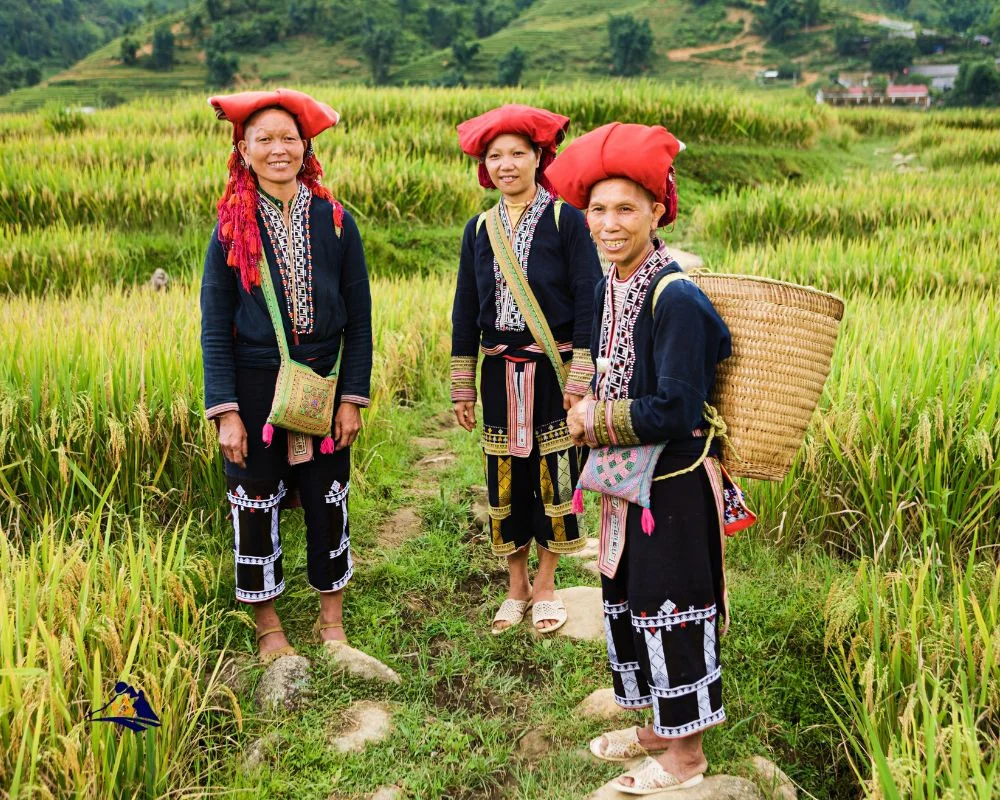
Sapa’s cultural heritage is prominently displayed through its vibrant festivals and traditional handicrafts. The locals enthusiastically celebrate their spiritual beliefs and significant agricultural milestones with colorful festivals. Visitors have the opportunity to witness captivating traditional song and dance performances, savor local delicacies, and learn about the practices of traditional herbal medicine.
One of the town’s highlights is its traditional handicrafts, including intricate embroidery and vibrant textiles. These crafts beautifully demonstrate the creativity and skill of local artisans, passed down through generations.
Sapa 1 Day Tours

- 1 day experience
- Moderate to challenging
- Cultural immersion & active adventure
- Rice fields, valleys & villages
- Private tours
- Vegan-friendly
Sapa 2 Day Tours

- 2 days 1 night experience
- Moderate to challenging
- Cultural immersion & active adventure
- Mountains, valleys, rice fields and villages
- Private tours
- Vegan-friendly
Sapa 3 Day Tours

- 3 days 2 night experience
- Moderate to challenging
- Cultural immersion & active adventure
- Mountains, valley, rice fields & villages
- Private tours
- Vegan-friendly
Sapa 4 Day Tours

- 4 days 3 night experience
- Moderate to challenging
- Cultural immersion & active adventure
- Mountains, valleys, rice fields & villages
- Private tours – Less Touristic
- Vegan-friendly
Sapa’s Rich History and Cultural Heritage allow visitors to fully immerse themselves in the traditions and customs of the ethnic minority groups. Exploring the town and its surroundings provides a profound understanding of Vietnam’s diverse cultural tapestry.
What Historical and Cultural Sites Can You Explore in Sapa?
When exploring Sapa, there are numerous historical and cultural sites that you can explore. These sites offer a glimpse into the rich history and heritage of the region. So, what historical and cultural sites can you explore in Sapa?
One notable place to visit is the Stone Church, also known as Our Lady of the Rosary Church. This prominent landmark, built by the French in the early 20th century, showcases colonial architecture and is still an active place of worship.
Another great site is the Sapa Museum, which provides a wealth of information about the region’s history and ethnic minority cultures. The museum displays artifacts, traditional costumes, tools, and photographs that offer insights into the local way of life.
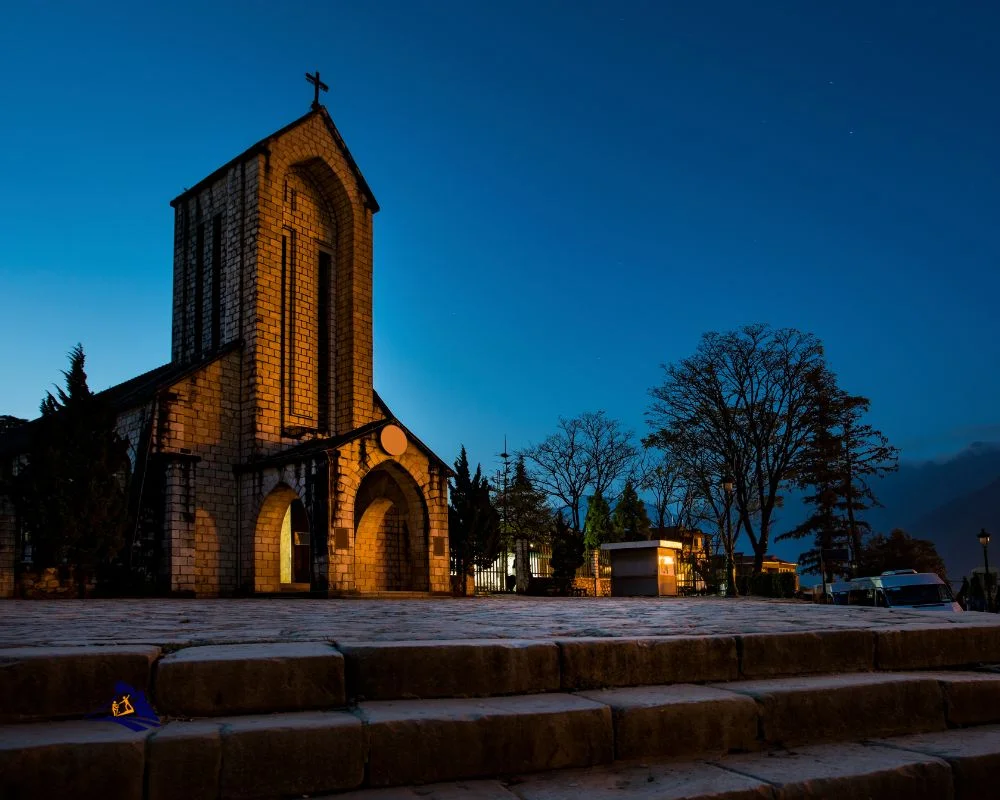
If you’re interested in exploring a traditional Hmong ethnic village, Cat Cat Village is a must-visit. Here, you can explore traditional Hmong houses, witness traditional handicrafts, and learn about the unique customs and traditions of the Hmong people.
For a deeper immersion into the local culture, Ta Phin Village is home to the Red Dao ethnic minority. This village offers a chance to admire their vibrant traditional clothing, experience a traditional herbal bath, and immerse yourself in the Red Dao’s way of life.
If you want to witness the agricultural practices of the local communities, a trek through the stunning Muong Hoa Valley is a must. This valley is known for its terraced rice fields, which showcase the skill and hard work that goes into cultivating these beautiful landscapes.
Responsible Trekking and Sustainable Tourism in Sapa
During my trekking experience in Sapa, I chose a responsible tour operator that focused on responsible trekking and sustainable tourism in Sapa. Our guide, a local from an ethnic minority village, shared stories about the region’s history, culture, and ecology. We stayed in a community-run homestay and had the opportunity to interact with villagers, learning about their daily routines and participating in traditional activities. It was an enriching experience that fostered a genuine connection with the local community while leaving a positive impact on the environment. Responsible trekking and sustainable tourism are crucial for preserving the beauty and authenticity of Sapa. Here are some important aspects to consider:
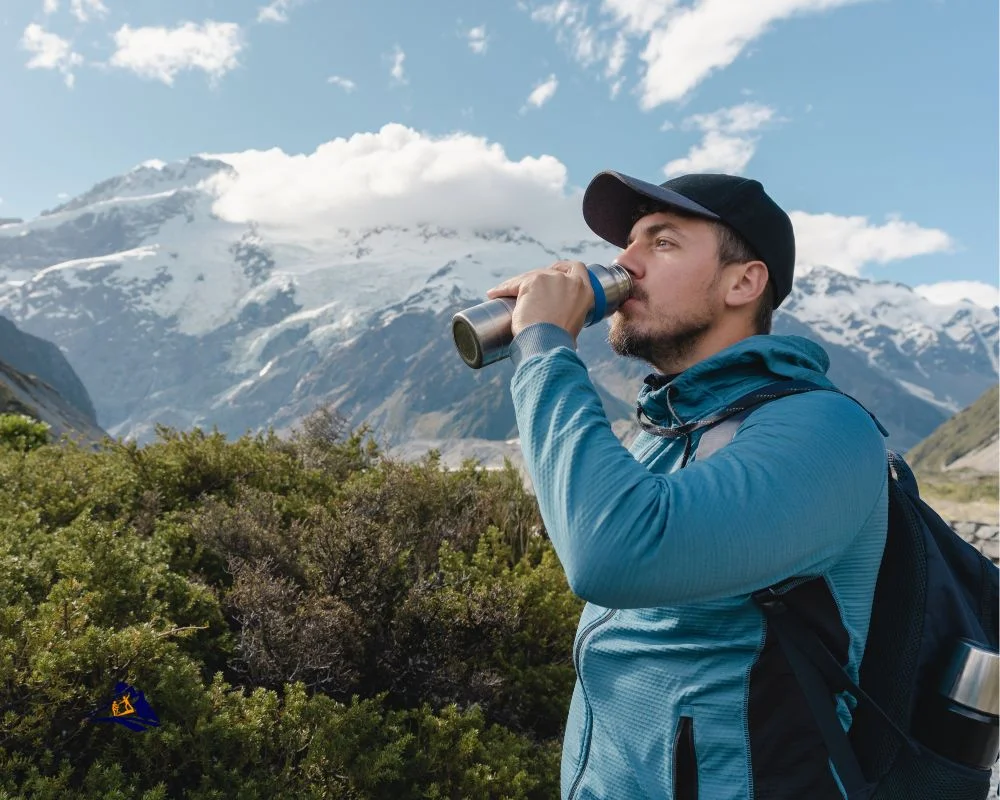
1. Local community involvement: When planning a trek in Sapa, choose tour operators who prioritize engaging and supporting the local communities. This ensures that the benefits of tourism are shared with the local people.
2. Respect for nature: While exploring Sapa’s natural landscapes, minimize your environmental impact. Stay on designated trails, dispose of waste responsibly, and avoid disturbing wildlife or damaging plants.
3. Cultural sensitivity: Sapa is home to various ethnic minority groups, each with their own traditions and way of life. Show respect for their customs, dress modestly, and ask for permission before taking photos.
4. Support local businesses: Choose locally owned and operated accommodation, restaurants, and shops. This directly contributes to the community’s economic well-being.
5. Seek authentic experiences: Look for tour operators that offer immersive experiences, allowing you to interact with locals and learn about their customs and traditions. This ensures a meaningful and sustainable travel experience.
Sapa 1 Day Tours

- 1 day experience
- Moderate to challenging
- Cultural immersion & active adventure
- Rice fields, valleys & villages
- Private tours
- Vegan-friendly
Sapa 2 Day Tours

- 2 days 1 night experience
- Moderate to challenging
- Cultural immersion & active adventure
- Mountains, valleys, rice fields and villages
- Private tours
- Vegan-friendly
Sapa 3 Day Tours

- 3 days 2 night experience
- Moderate to challenging
- Cultural immersion & active adventure
- Mountains, valley, rice fields & villages
- Private tours
- Vegan-friendly
Sapa 4 Day Tours

- 4 days 3 night experience
- Moderate to challenging
- Cultural immersion & active adventure
- Mountains, valleys, rice fields & villages
- Private tours – Less Touristic
- Vegan-friendly
What Measures are Taken to Promote Sustainable Tourism in Sapa?
Measures to Promote Sustainable Tourism in Sapa
Sustainable tourism in Sapa is promoted through various measures to preserve the environment and benefit the local community. The question of “What Measures are Taken to Promote Sustainable Tourism in Sapa?” is pivotal in ensuring the long-term sustainability of this tourist destination.
1. Waste management: Sapa has implemented proper waste management systems to minimize pollution and protect the natural beauty of the area. Recycling and waste reduction programs have been introduced to encourage responsible disposal of waste.
2. Conservation programs: In order to protect the biodiversity and natural resources of Sapa, numerous conservation projects have been initiated. These projects aim to restore and safeguard the flora and fauna, including rare species that can be found in the region.
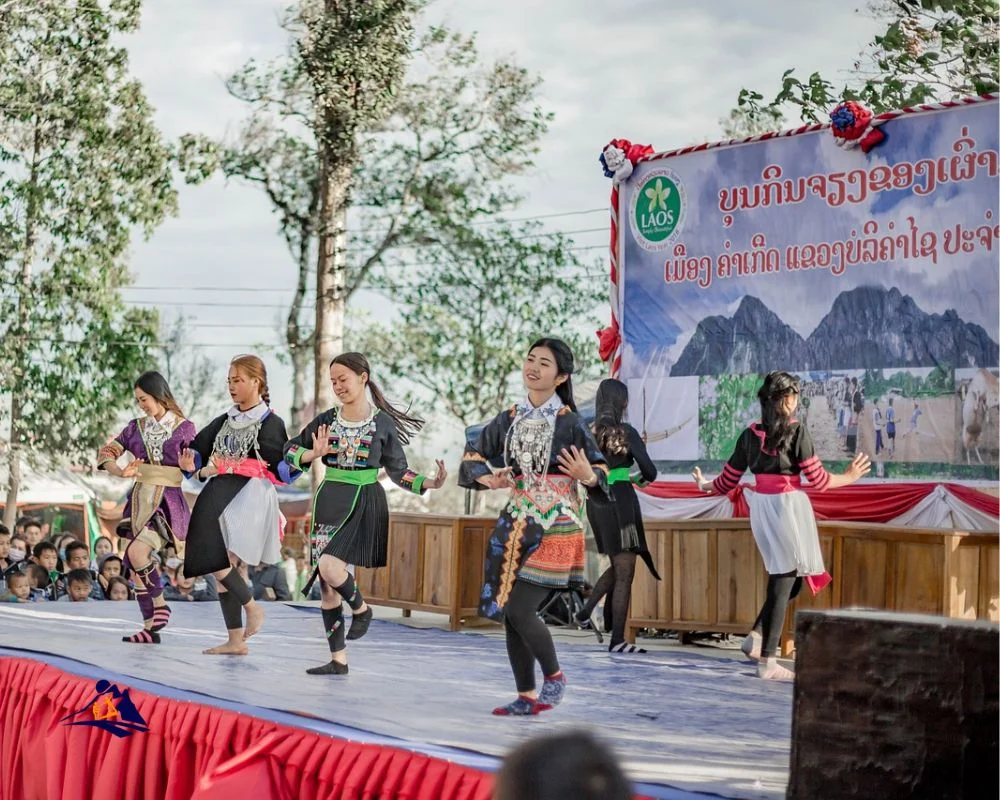
3. Community engagement: The local community in Sapa actively participates in tourism activities while simultaneously preserving their cultural heritage. This is achieved through the implementation of homestay programs that not only provide a source of income for the community but also offer visitors an authentic experience.
4. Responsible trekking practices: Guidelines and regulations have been established to minimize the environmental impact caused by trekking activities. Visitors are encouraged to follow designated trails, refrain from littering, and respect local customs.
5. Education and awareness: Educational programs and awareness campaigns have been developed to inform visitors about responsible tourism practices. Tour operators and guides play an essential role in promoting sustainable behavior among tourists.
6. Collaboration with local stakeholders: Sapa actively engages in partnerships with communities, government organizations, and NGOs to work towards achieving sustainable development goals. These collaborations ensure a holistic approach to sustainable tourism in the area.
By implementing these measures, Sapa aims to strike a balance between tourism and environmental conservation, thus ensuring the long-term sustainability of this beautiful destination.
Sapa 1 Day Tours

- 1 day experience
- Moderate to challenging
- Cultural immersion & active adventure
- Rice fields, valleys & villages
- Private tours
- Vegan-friendly
Sapa 2 Day Tours

- 2 days 1 night experience
- Moderate to challenging
- Cultural immersion & active adventure
- Mountains, valleys, rice fields and villages
- Private tours
- Vegan-friendly
Sapa 3 Day Tours

- 3 days 2 night experience
- Moderate to challenging
- Cultural immersion & active adventure
- Mountains, valley, rice fields & villages
- Private tours
- Vegan-friendly
Sapa 4 Day Tours

- 4 days 3 night experience
- Moderate to challenging
- Cultural immersion & active adventure
- Mountains, valleys, rice fields & villages
- Private tours – Less Touristic
- Vegan-friendly
Why Should You Consider Trekking in Sapa?
Trekking in Sapa offers a unique and unforgettable experience for adventure enthusiasts. Here are the reasons to consider trekking in Sapa:
1. Breathtaking Scenery: Sapa has stunning landscapes, with terraced rice fields and majestic mountains that will leave you in awe.
2. Cultural Immersion: Sapa is home to ethnic minority groups like the Hmong, Dao, and Tay. Trekking in Sapa allows you to interact with these communities, learn about their traditions and customs, and gain a deeper understanding of their way of life.
3. Challenging Terrain: Sapa’s terrain offers a thrilling experience for adventure seekers. With rugged mountains and steep slopes, it’s perfect for an adrenaline rush.
4. Authentic Homestay Experience: During your trek, you can stay in traditional homestays, live with local families, and immerse yourself in their daily lives. It’s a chance to experience true Vietnamese hospitality and create meaningful connections.
5. Mouthwatering Local Cuisine: Sapa is known for its delicious traditional dishes, like the famous Sapa grilled pork and flavorful corn wine.
6. Hidden Waterfalls and Caves: Sapa is home to breathtaking waterfalls and caves waiting to be explored, such as the Silver Waterfall and Thuy Cung Cave.
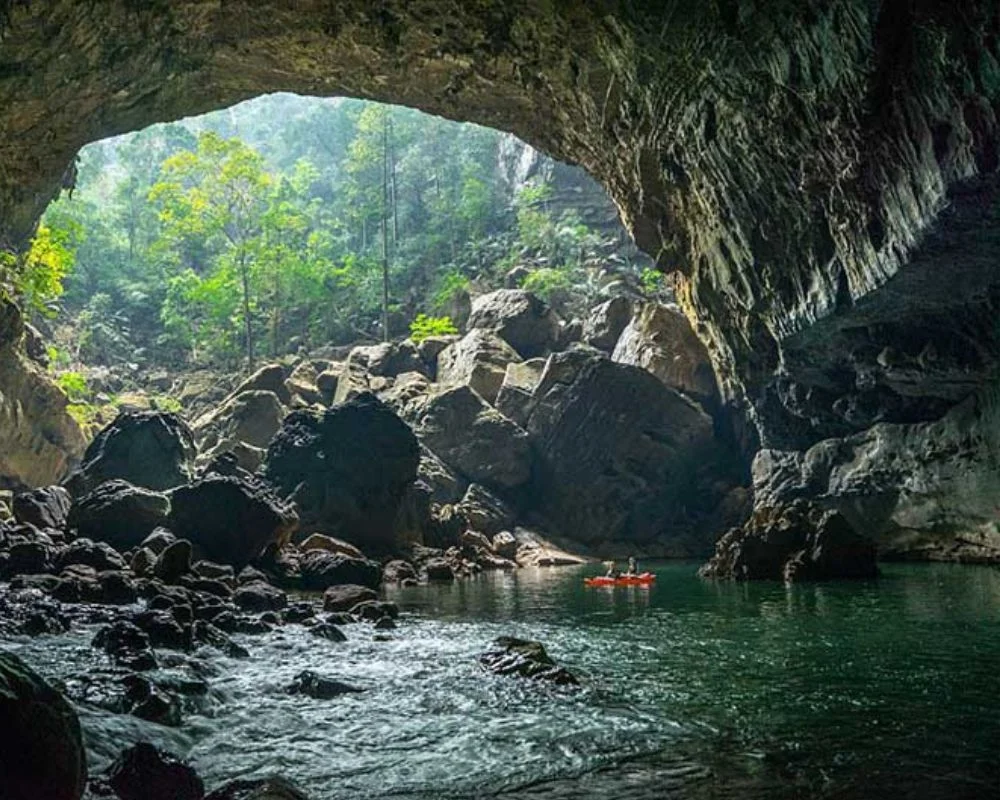
7. Ever-Changing Beauty: Sapa’s beauty varies throughout the year, offering different breathtaking views depending on the season.
8. Vibrant Local Markets: Sapa is famous for its colorful local markets, where you can find a variety of handicrafts, textiles, and fresh produce.
9. Rich History and Cultural Heritage: Sapa has a fascinating history and is home to historical and cultural sites worth exploring.
Trekking in Sapa offers an incredible blend of natural beauty, cultural immersion, and adventure. It promises an adventure of a lifetime, combining breathtaking landscapes, cultural discovery, and a truly authentic experience.
Sapa 1 Day Tours

- 1 day experience
- Moderate to challenging
- Cultural immersion & active adventure
- Rice fields, valleys & villages
- Private tours
- Vegan-friendly
Sapa 2 Day Tours

- 2 days 1 night experience
- Moderate to challenging
- Cultural immersion & active adventure
- Mountains, valleys, rice fields and villages
- Private tours
- Vegan-friendly
Sapa 3 Day Tours

- 3 days 2 night experience
- Moderate to challenging
- Cultural immersion & active adventure
- Mountains, valley, rice fields & villages
- Private tours
- Vegan-friendly
Sapa 4 Day Tours

- 4 days 3 night experience
- Moderate to challenging
- Cultural immersion & active adventure
- Mountains, valleys, rice fields & villages
- Private tours – Less Touristic
- Vegan-friendly
10 Things You Didn’t Know About Trekking in Sapa:
- ✅ Sapa is home to Vietnam’s highest peak, Fan Si Pan, and is renowned for its breathtaking terraced rice paddies. (Source: nomadasaurus.com)
- ✅ The town of Sapa has a fascinating history, with the French developing it as a hill station in the early 1900s. (Source: nomadasaurus.com)
- ✅ Getting to Sapa is primarily done through organized tours, which typically involve a train ride from Hanoi to Lào Cai and a transfer to Sapa. (Source: nomadasaurus.com)
- ✅ Trekking in Sapa offers stunning mountain views and valleys, often accompanied by mist and rain that adds to the adventure. (Source: nomadasaurus.com)
- ✅ Many trekking tours in Sapa include homestays, giving tourists the chance to immerse themselves in local culture and enjoy meals with hospitable host families. (Source: nomadasaurus.com)
Things You Didn’t Know About Trekking In Sapa Frequently Asked Questions
What are some scenic regions to visit while trekking in Sapa?
While trekking in Sapa, there are several scenic regions that you can visit including the Muong Hoa Valley, the Hoang Lien Son Mountain Range, and the terraced rice fields. These areas offer stunning views and are perfect for nature lovers and photography enthusiasts.
Is it necessary to book a tour for trekking in Sapa?
Booking a tour for trekking in Sapa is not necessary but highly recommended. While it is possible to trek on your own, the trails are not marked and it can be easy to get lost. Booking a reputable trekking tour online in advance ensures a positive and safe experience.
What should I pack for a Sapa trekking tour?
When packing for a Sapa trekking tour, it is recommended to bring sunscreen, good shoes, bug spray, a raincoat, a swimsuit, and lots of water. Dressing in layers is important as the weather can change quickly. It is also advised to bring extra phone battery and charging cable, as well as first aid supplies, such as band-aids and pain relievers.
How do I get to Sapa for trekking?
To get to Sapa for trekking, you can take organized tours which are the cheapest and most hassle-free option. The journey involves a train ride from Hanoi to Lào Cai, where tourists are met by drivers who take them to Sapa. The train ride can be noisy and uncomfortable, but it provides an opportunity for some sleep before the trekking begins.
What is the best time to visit Sapa for trekking?
The best time to visit Sapa for trekking is from March to May and from September to November. During these months, the weather is cool and dry, and the terraced rice fields are at their most vibrant. Sapa can be visited year-round, each season offering its own unique beauty.
Are there any cultural experiences while trekking in Sapa?
Yes, trekking in Sapa offers various cultural experiences. Trekking tours often include homestays, where tourists stay with local families and enjoy meals together. This allows visitors to interact with ethnic minorities, learn about their customs, and experience their way of life. It’s a great opportunity for cultural exchange and a truly immersive learning experience.
Sapa 1 Day Tours

- 1 day experience
- Moderate to challenging
- Cultural immersion & active adventure
- Rice fields, valleys & villages
- Private tours
- Vegan-friendly
Sapa 2 Day Tours

- 2 days 1 night experience
- Moderate to challenging
- Cultural immersion & active adventure
- Mountains, valleys, rice fields and villages
- Private tours
- Vegan-friendly
Sapa 3 Day Tours

- 3 days 2 night experience
- Moderate to challenging
- Cultural immersion & active adventure
- Mountains, valley, rice fields & villages
- Private tours
- Vegan-friendly
Sapa 4 Day Tours

- 4 days 3 night experience
- Moderate to challenging
- Cultural immersion & active adventure
- Mountains, valleys, rice fields & villages
- Private tours – Less Touristic
- Vegan-friendly
